6 Effective Jaw Exercises for TMJ Relief

Life is a juggling act. But balancing taking care of yourself and your loved ones, doing household chores, and tackling work or study-related tasks becomes even more tricky when you’re dealing with chronic pain, fatigue, doctor’s visits and therapy sessions on top of that.
How do you keep all your balls in the air when you have serious health problems? Well, sometimes you can’t, and that’s ok. And sometimes, setting up supportive systems and streamlining your day-to-day activities can help you to still get meaningful things done despite your chronic conditions.
In the previous article, we discussed 7 general strategies to simplify your life with chronic illness to make your days a little easier. Today, let’s dive deeper into actionable advice on how you can simplify self-care, household chores, and life admin.
From caring for your body and mind to cleaning and cooking, take a look at 17 practical tips to simplify your life with chronic illness.

This article contains some affiliate links to products you may find useful, at no extra costs to you. All opinions are my own.
Looking after your body, mind and spirit take up some time in your day, especially when you’re living with a chronic illness. First of all, you have extra self-care tasks to do, like taking your meds, doing physical therapy exercises or managing your pain levels. But secondly, normal daily routines require a lot more effort. If you have POTS, you may need to rest after having a shower, while someone with severe arthritis might struggle to get dressed.
What can you do to simplify your daily self-care? None of these tips will work for everybody, but here are some strategies to make taking care of your body and mind a little more effortless.
When it comes to your daily hygiene, getting dressed and feeding yourself, what’s the biggest problem you’re struggling with right now? What drains your energy, hurts or makes you feel not good about yourself?
Once you name that one activity of daily living, explore what you can do to make it easier for yourself:
Keystone habits are routines with multiple benefits, and ideally ones that you can easily fit into your days. Simplify your healthy habits by killing two birds (or more!) with one stone.
For example, spending time in natural surroundings exposes you to fresh air and vitamin-D producing sunshine that also fine-tunes your body clock, while lowering your stress levels, reducing mental fatigue and boosting your mood. That’s pretty helpful for a walk in the park or resting in your garden, right?
For more inspiration, check out 8 keystone habits that will improve your life in different areas.

We’d all love to go on a wellness retreat to focus solely on improving our health and happiness, but that’s not a realistic option for most of us. Instead, see how you can incorporate your recovery plans in your everyday life, with household chores that have to be done, bills that have to be paid and loved ones who’d like your attention too.
You could gradually build up your walking stamina by going to a nearby store on foot – and grab some healthy ingredients for dinner. Arrange with a neighbor or friend in your community to both batch cook a nourishing meal and swap those extra portions once a week, so you can both enjoy one night without cooking – and with a new recipe to taste. You could also make your rest time more restorative by alternating watching Netflix with simple activities that trigger your body’s relaxation response, like breathing exercises and slow movement.
Finding ways to move towards your recovery goals in the midst of your daily life could really simplify your self-care load.
You may not even realize it, but all the information we consume all day long has a big impact on our thoughts, beliefs, emotions and actions. The shows you watch, the music you listen to, the news you read and the social media channels you scroll through, they all shape how you see the world and yourself in it.
So start choosing more mindfully when, how and which kind of information you want to mentally digest. Minding your mental diet isn’t just an act of self-care in itself, but it can also simplify your life in several ways. For example, reducing distractions like notifications will boost your attention span, while spending less time mindlessly watching YouTube leaves you more time for activities and people you actually care about.
It can be helpful to set some ‘rules’ for yourself, like:
For more inspiration on curating your mental consumption, check out 28 Tips to Nourish Your Mind in Healthy Ways and 13 Thoughts on Healthy Social Media Use with Chronic Illness, as well as The Bored and Sick Guide with 130 analogue, low-energy activities you can do at home.
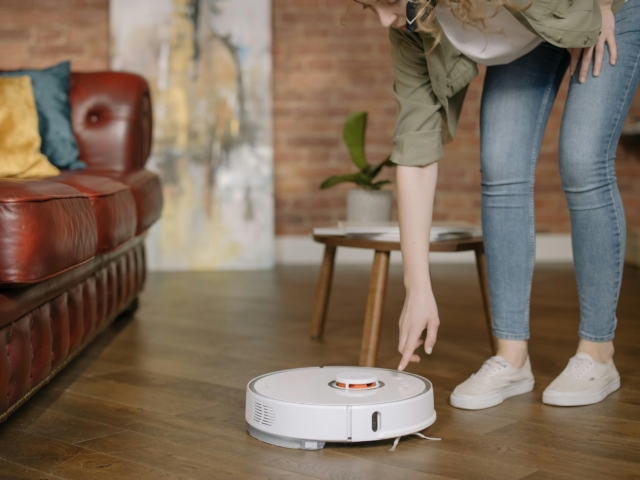
Ironically, simplifying your daily life with chronic illness comes with some planning and preparation – especially prepping for unexpected circumstances. Why? Because with your fluctuating health and energy levels, you know you won’t always be able to do what needs to be done under time pressure or in a (health) crisis situation.
It feels counterintuitive to spend your precious energy on decluttering and meal planning, but in the long run having simple but supportive systems in place will help you prevent overwhelm, stress, flare-ups and (more) exhaustion.
Obviously, everyone’s health condition and living situation are different, but let’s take a look at some practical tips to simplify your home.
No matter how good or bad you feel, we all have to eat multiple times a day. That’s why preparing meals with chronic illness can take up more of your energy-filled time than you’d like, especially if you have allergies or follow a medical diet.
Whether you prefer a vegetarian, keto or gluten-free food pattern, start with making a list of your household’s pantry staples needed for a varied and balanced diet. Which basics do you need for breakfast, lunch, dinner and snacks to get an adequate amount of protein, healthy fats, slow carbohydrates and vitamins in?
It doesn’t have to be a study in nutrition, but getting a clear picture of your dietary needs can make your grocery shopping and meal planning process easier. More so, you may identify certain obstacles to sticking to your diet, like not having an AIP-proof snack to take when you’re on the go or struggling with eating enough iron-rich foods as a vegan.
In this spirit, make sure you have 5 to 10 suitable and easy recipes in your cooking repertoire that you can always turn to.
It can be a pain to come up with what’s for dinner every night. Assigning a culinary theme to (some) days will help you to come up with a varied week menu while also keeping it simple. For example, we eat pasta every Monday, but depending on the season, grocery deals and our appetite, we alternate between spaghetti with meatballs, gnocchi with roasted vegetables, and other pastas.
You could have a Taco Tuesday or Soup and Salad Saturday, but if you prefer to simplify your meal planning by alternating meat, poultry, fish and vegetarian dinners continuously, that also works. Use any meal planning strategy that reduces your mental load and helps you to get nourishing meals in more effortlessly.
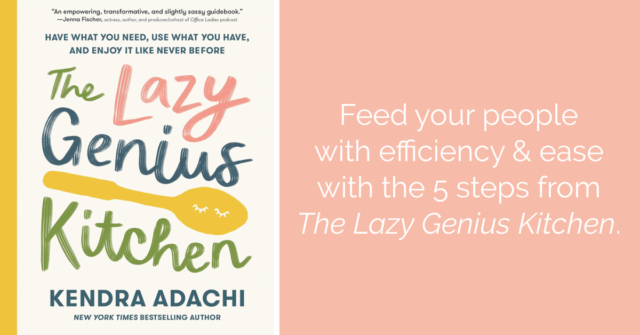
If this option is affordable and available in your area, consider ordering your groceries online to avoid heavy lifting, standing in queues or sensory overload. You may also find it easier to stay within your food budget if you can compare prices at one glance or swap items in your virtual cart.
No matter how you do your grocery shopping, create a standard shopping list of all the pantry staples you need regularly that you can print out every week or curate in a grocery list app. That won’t just save you time planning, but also reduces the number of times you have to run back to the supermarket because you forgot an essential ingredient thanks to your brain fog.
Zoom in: which aspect of making meals do you struggle with the most? Does it hurt your hands to chop vegetables or draining out the water after cooking? Do you get tired or dizzy from standing behind the stove? Not strong enough to place heavy dishes in the oven?
Depending on your answers, there are different things you can do to make cooking more effortless:
Alternatively, you could look into a healthy meal service if that’s affordable and available to you.
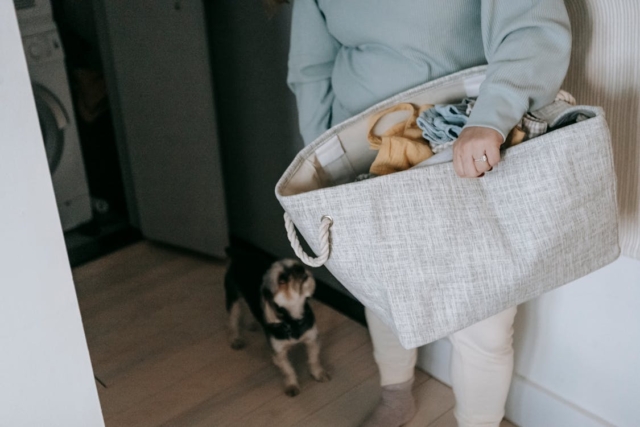
If you’re dealing with painful bowel symptoms, migraine attacks or post-cancer fatigue, your house will probably not look as spotless as you’d wish, and that’s ok! It’s more important to have a basic level of hygiene and safety covered than to have a picture-perfect decor. So don’t be ashamed to (temporarily) lower your household standards.
In this spirit: if you share your home with other people, make sure you have a similar vision (or happy compromise) of what a clean and tidy house means to you and divide the workload in a way that works for you all.
Explore what suits you best: doing some chores every day or having one intensive chore day.
Maybe you like to do one load of laundry every (other) day and tidy one are of your home daily to pace your energy and to prevent stuff from piling up. Or perhaps you’d much rather prefer to have one day a week dedicated to cleaning sessions, so you can put it out of your mind and take it easy the rest of the week.
Both strategies are fine, you just have to see what best fits your health condition and personality. Make sure to also plan breaks in between different tasks.
No worries, you don’t have to reorganize your fridge with beautiful storage containers (unless you want to). But keeping the clutter under control will make it easier to find the things you’re looking for and to clean your house without having to move a pile of stuff out of the way first.
I’ve written a whole post dedicated to this topic – ‘Cut the Clutter: A Practical Plan to Get Organized with Chronic Illness’ – so let’s stick to some essentials:
Embracing the concept of ‘minimalism with a back up plan’ will help you to focus on ‘less but better’ belongings and routines.
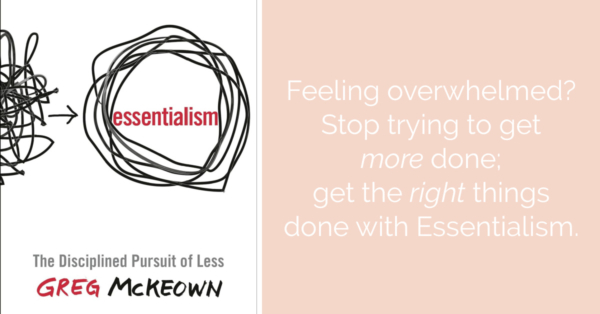
Aside from hiring help and dividing the workload fairly amongst your housemates, what can you do to simplify chores? A lot depends on your health, your house and who you share your home with, but here are some household hacks that could help:
You can find more tips in ‘Housekeeping Hacks 101: How to Get Chores Done with Chronic Illness‘.
Most of us have plenty of clothes, yet feel like we have nothing to wear. How can you put on a clean and comfortable outfit that makes you feel like you when you’re exhausted and in pain?

Living with chronic illness often comes with a lot of (digital) paperwork and appointments. What can you do to better manage life admin like medical records, insurance claims or filing taxes, despite fatigue and brain fog?
It can be hard to stay on top of bills, forms, documents and complicated emails if you never purposely free up the time and (mental) energy to do it. So once a week or month, schedule time in your calendar for life admin tasks.
Take some mental load off your plate by automating recurring tasks. Have a look at a few ways you could simplify your life admin with one-time actions:
Automating tasks is a great example of the strategy ‘decide once’ to simplify your home and work life.

Depending on where you live in the world, it can be helpful to have certain medical documents organized. It may take some effort at first, but hopefully having all the important documents ready will simplify future medical appointments or crisis situations.
Prevention.com has some tips for (US-based) patients where to find the medical information you may need.
When you’re planning your day or week, it’s helpful to not over-schedule yourself when living with a chronic illness. You could use the buffer time to rest up before and after appointments and activities, to not have to hurry when things don’t go as planned, or to deal with incidents like having to take your pet to the vet.
Leaving space in your calendar also allows you to better manage a flare-up of symptoms, post-exertional malaise or simply catching a virus that forces you to take it easy. That way, you can rest knowing that there’s time available later that week to do the chores and tasks you had meant to do when you were feeling unwell.
And if your health is really unpredictable, maybe you could benefit from planning a reset day bi-weekly or monthly. A reset day is time fully dedicated to getting your life back on track; whatever that may mean to you. You could catch up on household chores, spring clean your home, prep a batch of freezer meals, or tackle other tasks on your to-do list. Planning reset days ahead of time can help you to achieve meaningful goals despite a fluctuating health.
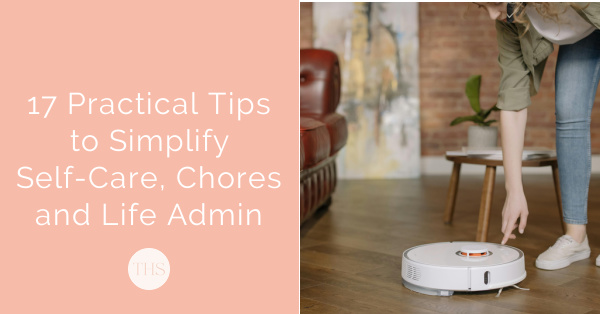
Sadly, there’s no magical formula to make daily life with chronic illness easy. But hopefully, these 17 practical tips to simplify self-care, chores and life admin will help you to take good care of yourself and your living space, while still having some precious energy left for the activities and people that make you smile!
Which practical tips help you to simplify daily life with chronic illness?